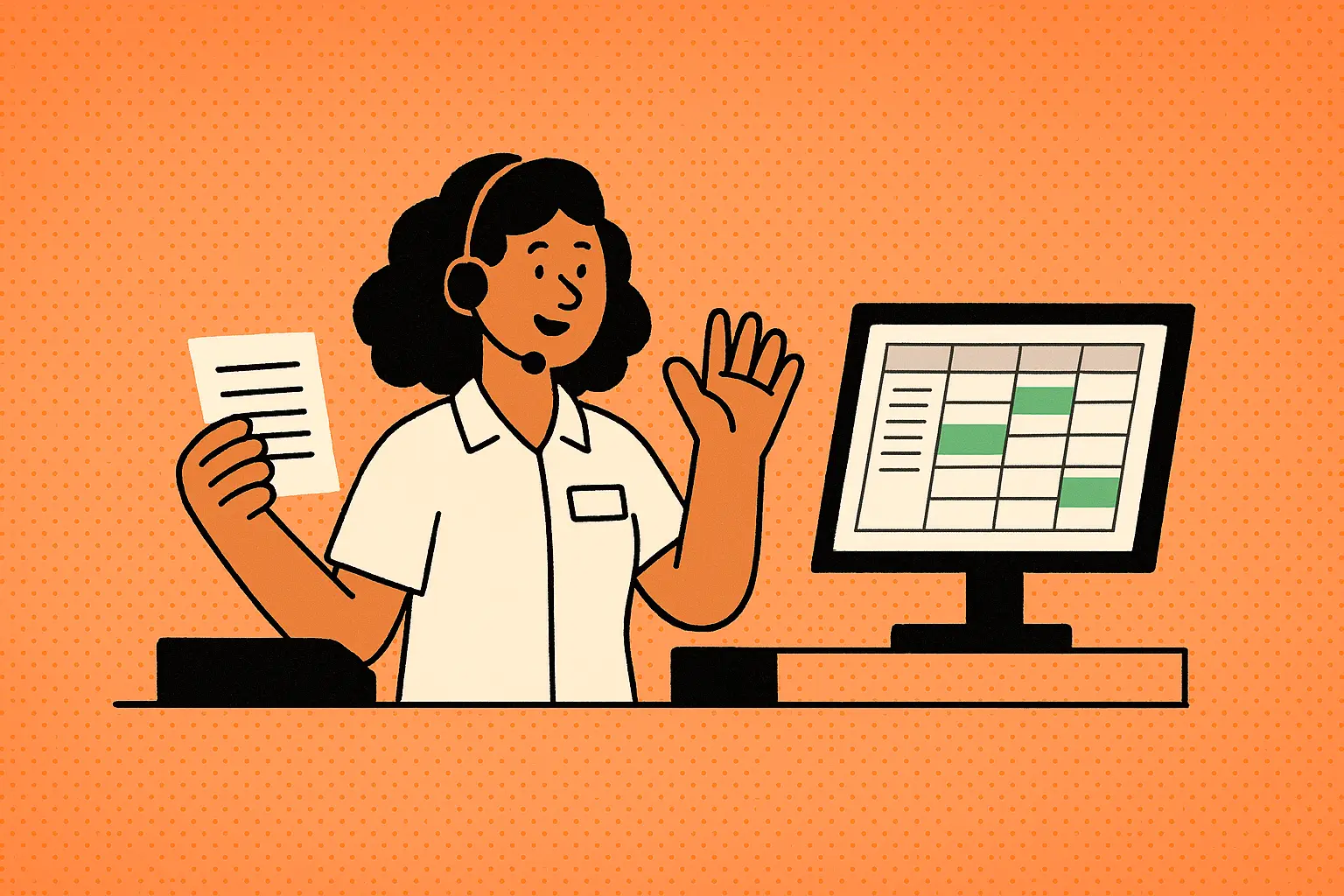

Urgent Care Holiday Hours: Pros & Cons
Data-driven guide to urgent care holiday hours—pros, cons, and how to decide when to stay open.

Urgent Care Holiday Hours: Pros & Cons
For urgent care operators, “urgent care holiday hours” is more than a line on the website—it’s a strategic decision that impacts access, brand, staffing, and the P&L.
Patients still get sick on Thanksgiving. Kids still spike fevers on Christmas Eve. Sprains, cuts, and flu don’t stop for New Year’s fireworks. The question isn’t whether there is demand; it’s whether staying open on Thanksgiving, Christmas, and New Year’s is the right move for your specific market.
This article breaks down the pros and cons of keeping urgent care centers open on Thanksgiving, Christmas Eve, Christmas Day, New Year’s Eve, and New Year’s Day, using industry data and a simple decision framework you can apply across your footprint.
The Landscape: How Many Urgent Cares Are Open on Major Holidays?
A recent analysis of roughly 2,000 U.S. urgent care centers published in The Journal of Urgent Care Medicine, looked at visit volumes and closure patterns by holiday.
For key winter holidays, the data show:
Holiday % of centers closed % of centers open Avg visit variance vs. typical day
Thanksgiving Day 77% closed 23% open –46.2% visits
Christmas Day 86% closed 14% open –54.5% visits
New Year’s Day 44% closed 56% open +1.6% visits
Key takeaways:
- Thanksgiving and Christmas Day: The majority of centers stay closed; only about 1 in 4 are open on Thanksgiving and about 1 in 7 on Christmas Day.
- New Year’s Day: The field is more evenly split, with over half of centers staying open and seeing visit volumes roughly in line with a normal day.
- Christmas Eve and New Year’s Eve: There’s no national percentage breakdown, but industry guidance and consumer-facing content consistently describe shortened hours rather than full closure for many centers on these “partial” holidays.
Broader survey data reinforce that urgent care is fundamentally built for extended access: older national data show roughly 85% of urgent care centers are open seven days a week, Becker's Hospital Review and a more recent Urgent Care Association white paper notes that over 67%of centers are open every day of the week, with many shifting to reduced hours instead of full closure on holidays.
In parallel, hospitals and EDs consistently report holiday volume spikes, especially around Christmas and New Year’s, as primary care offices close and respiratory illnesses surge. That creates both pressure on the system and opportunity for urgent care.
Pros of Keeping Your Urgent Care Open on Holidays
1. Increased Access and Community Goodwill
When primary care offices are closed and EDs are packed, an open urgent care center often becomes the most realistic option for non-life-threatening issues—flu, strep, minor injuries, dehydration, asthma flares, and holiday-related mishaps.
Being “the clinic that’s there when no one else is” builds:
- Community trust (“they’re always open, even on the holidays”)
- Top-of-mind awareness when families decide where to go for care
- A reputation as a reliable alternative to the ER for appropriate cases
Long term, that brand equity often pays off in repeat visits and word-of-mouth that outlast a single holiday’s P&L.
2. Capturing Demand and Revenue Spikes Around the Holidays
While day-of holiday volumes can be lower - especially on Thanksgiving and Christmas Day - the days around them can be some of the busiest of the year.
- The JUCM analysis found that the day after Christmas sees a 51.8% increase in visits, making it the busiest day of the year for many centers.
- Other reports note that the day after Thanksgiving is often the second-busiest day, driven by cooking injuries and GI issues.
Staying open on holidays (even with reduced hours) can smooth demand and prevent an overwhelming post-holiday surge that strains staff, creates long wait times, and erodes patient satisfaction.
3. Supporting the Healthcare System and Payer Relationships
Emergency departments experience sharp increases in volume during Christmas and New Year’s periods.
Holiday urgent care access helps:
- Decompress EDs by diverting non-emergent cases
- Reduce total cost of care for payers and health systems
- Position your center as a preferred access point in holiday surge planning
This can be particularly valuable in markets where health systems or payers are actively steering patients toward appropriate lower-cost sites of care during high-demand periods.
4. Differentiated Brand Positioning
The statistics makes the point bluntly: being open 365 days a year, including holidays, can put your brand in the same “always available” category as big retail names.
When competitors are closed:
- You own the holiday share of voice in your market
- Your center becomes the default answer when patients search “urgent care open on Christmas” or “urgent care open New Year’s Day”
- You can leverage digital and in-center messaging to reinforce your “we’re here when you need us” value proposition
From a growth lens, that’s powerful positioning.
Cons of Staying Open on Holidays
1. Higher Staffing Costs and Risk of Burnout
Holiday coverage is rarely just “business as usual”:
- Overtime, holiday pay, and bonuses increase per-hour staffing costs
- Lean teams working long stretches can see fatigue and burnout, especially when holidays stack with respiratory season
- Frontline morale can suffer if staff feel forced to choose between family and work
Historically, the breakeven model emphasizes that once you factor in premium pay and holiday-specific expenses, you need more visits than atypical day to hit break-even.
If your holiday volumes are consistently low, the math simply may not work.
2. Lower Visit Volumes on Certain Days
The same data that shows high traffic after holidays also shows that major holidays themselves tend to be slower:
- Thanksgiving Day: –46.2% visit variance vs. a normal day
- Christmas Day: –54.5% visit variance vs. a normal day
When you combine below-average volume with above-average staffing cost, certain days—especially Christmas Day—are difficult to justify strictly on single-day profitability.
3. Operational and Safety Considerations
Operating on holidays comes with additional overhead:
- Security concerns when skeleton crews work and dark parking lots
- Radiology, lab, and IT support that may not be fully staffed
- Increased risk of workflow bottlenecks if one provider or MA calls out and you have no back-up
All of this adds complexity to scheduling and risk management.
4. Revenue Cycle Complexity
Holiday operations can create nuances in:
- Payer rules for holiday dates and billing windows
- Coding and documentation for seasonal surges in injuries and respiratory illness
- Authorizations or follow-up visits when referral partners are closed
If your front and back offices aren’t tightly aligned, holiday visits can contribute to claim delays and denials that blunt the financial upside.
Building Your Holiday Hours Strategy: A Simple Framework
When you decide if your urgent care should be open on holidays, think in terms of framework, not just dates:
1. Analyze your own data
- Visits by hour and day around each holiday for the past 2–3 years
- Net collections per visit vs. incremental staffing cost (including holiday pay)
- Impact of being open/closed on the day after the holiday
2. Map your competitive landscape
- Which local urgent care centers, retail clinics, and ED alternatives are open on each holiday?
- Are you competing with or complementing a local health system’s surge plan?
3. Define your brand promise
- Are you aiming to be “open 365 days a year” or “smartly available when demand is highest”?
- This will drive how aggressive you are with Christmas Day and Thanksgiving access.
4. Right-size the staffing model
- Use reduced hours and lean staffing for low-volume holidays.
- Use hub-and-spoke coverage (one location open) if you operate multiple sites.
- Protect staff by rotating holiday assignments and offering clear incentives.
5. Over-communicate your holiday hours
To convert holiday access into actual visits, make sure your message shows up where patients look first:
- Google Business Profile and online listings
- Website banner and location pages
- Social media posts and pinned updates
- Email/SMS reminders to patient panels and employer partners
6. Measure and iterate
After each holiday season, review:
- Visits per hour
- Net revenue vs. incremental cost
- Wait times, LWBS, and patient satisfaction
- Staff feedback and burnout indicators
Then refine next year’s holiday hours by holiday, by site, and by shift.
The Bottom Line
There’s no one-size-fits-all answer to whether an urgent care center should be open on Thanksgiving, Christmas Eve, Christmas Day, New Year’s Eve, or New Year’s Day.
- Data tell us that most centers close on Thanksgiving and Christmas Day, but a meaningful minority stay open—and the day after Christmas is the busiest day of the year for many clinics.
- New Year’s Day is closer to a “normal” operating day, with more than half of centers open and visit volumes essentially flat or slightly positive.
- Christmas Eve and New Year’s Eve are often treated as shortened-hours days, balancing access and staff well-being.
The real opportunity is to move from ad-hoc decisions to a data-driven holiday hours strategy that aligns:
- Patient access and community expectations
- Staff well-being and culture
- Brand differentiation
- Financial performance and payer relationships
When those elements are aligned, being open on the “right” holidays for your market stops being a burden—and becomes a competitive advantage.
If you’re rethinking your urgent care holiday hours strategy or evaluating EMR and workflow tools to support it, the team at UrgentIQ would be glad to talk—reach out anytime at sales@urgentiq.com
Sources
Journal of Urgent Care Medicine (JUCM). (2023). Holiday Visit Volume Analysis: Thanksgiving, Christmas, and New Year’s Operating Patterns Across U.S. Urgent Care Centers.
Centers for Disease Control and Prevention (CDC). (2024). Seasonal Emergency Department Visit Trends: Respiratory, Injury, and Holiday-Related Utilization Patterns.
American Medical Association (AMA). (2023). Medicare Telehealth Flexibility Expiration: Implications for Urgent Care Billing and Advance Beneficiary Notices.
U.S. Healthcare System Winter Surge Reports. (2023–2024). Emergency Department Utilization During the Christmas and New Year Holiday Period.
Urgent Care Association (UCA). (2023). Industry Benchmarks on Clinic Hours, Staffing Models, and Access Patterns.
More blog posts to read
Prefer to send an email? Send us your request at sales@urgentiq.com, and we'll coordinate with you directly.
We're thrilled that you're interested in joining us. Please fill out the form below to get started on your journey with UrgentIQ.




